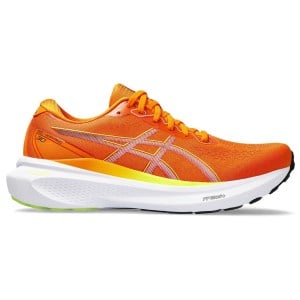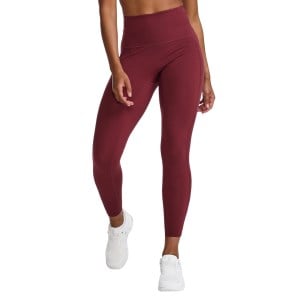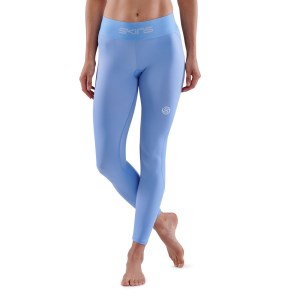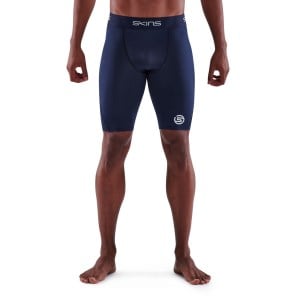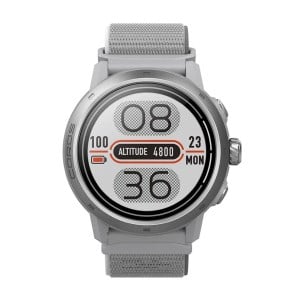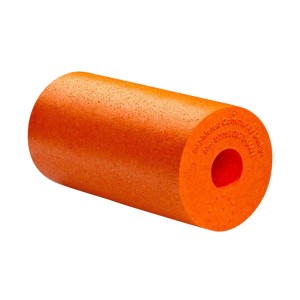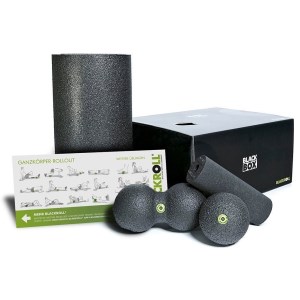How To Prevent Hip Pain When Running
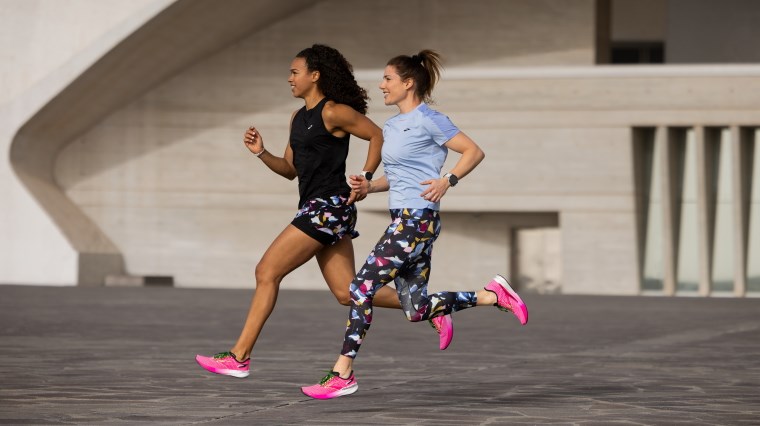
Embarking on a running journey is exhilarating, and the road promises many rewards. However, it’s essential to approach it with knowledge and care, especially concerning common hurdles like hip pain. If you’re wondering how to prevent hip pain when running, keep reading to learn how to make sure your hips stay comfortable while running.
Understanding hip pain and running
Running offers the thrill of the open road, a sense of freedom, and an unbeatable rhythm underfoot. However, like any activity it comes with its own unique challenges. Hip pain, for one, often leaves runners puzzled and in discomfort. So, what causes this, and how can you prevent it?
Root causes of hip pain in runners
Hip pain can stem from various sources. Overuse, particularly when you’re rapidly increasing your running intensity or training load, stands out as a common issue. It’s like shifting from a casual weekend jog straight to a marathon without ample training.
Muscle imbalances can also play a part, whether they're weak glutes or overly tense hip flexors. Don’t forget the nuances of running form; overstriding or unnecessary hip rotation can create problems even when you’re in brand-new Mizuno shoes. And if underlying conditions like arthritis or bursitis lurk, it complicates matters further.
How running techniques influence hip strain
Your running technique can either be your best mate or your worst enemy when it comes to hip health. Have you come across the term overstriding? It happens when your foot lands too far ahead of your body, forcing your hips into an uncomfortable flex. Excessive hip rotation, even when you’re wearing the right running shoes, feels like trying to dance the twist during a sprint – definitely not ideal.
The importance of proper warm-up to prevent hip issues
Warming up is like giving your body a friendly heads-up before a run. Before you slip into your Brooks shoes or ASICS shoes, ensure a dynamic warm-up is part of your routine. Trust us; leg swings and hip circles are brilliant for hip mobility. When you hit the trails in your men's trail running shoes or women's trail running shoes, exercises like squats and lunges prepare your hips and glutes, reducing muscle imbalances and sidestepping potential injuries.
Selecting the right running gear
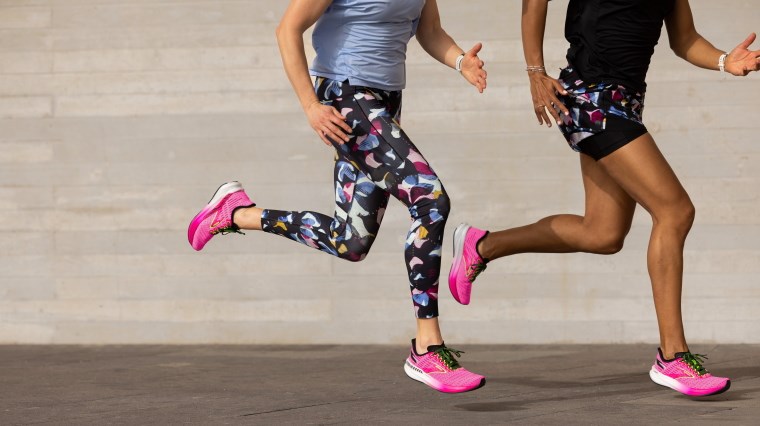
Every run is a unique experience, an adventure in its own right. To make the most of it, equipping yourself with the right gear is crucial. Not only does it maximise your performance, but it also ensures that you embark on this journey in comfort and safety.
The importance of choosing the right footwear
The right pair of running shoes is foundational for any runner. They offer the cushioning, support and stability your feet desire, reducing injury risks. It’s essential to choose footwear based on your running terrain, whether that’s rugged trails or smooth streets. And remember to replace worn-out shoes; they can be a recipe for injuries.
The role of compression gear in reducing hip strain
Experiencing hip pain post-run? Enter compression gear. Pieces like compression shorts or compression tights are game-changers. They provide muscle and joint support, enhance circulation, and mitigate muscle fatigue. What’s more, they significantly alleviate hip strain, aiding in quicker post-run recovery.
Benefits of using specialised running accessories
Elevate your running game with specialised accessories. Whether it’s a running watch to monitor your stats, a hydration pack for those extended jaunts, or even reflective gear for dusk or dawn runs, the right accessories make a world of difference. It’s not just about the run; it’s about optimising the entire experience.
💡KEY TAKEAWAY: Your running gear is a crucial partner in your journey. Ensuring you have the right tools enhances your performance, guarantees safety, and augments the overall experience.
Perfecting your run: Technique essentials
Running is both an art and a science. To perfect your run, understanding and optimising your techniques is paramount, especially when focusing on areas like the hips that can be more susceptible to stress.
Minimising hip stress through posture
Running goes beyond mere speed; it’s about effective movement. Your running posture is vital to ensuring minimal stress on your hips. Keep those shoulders relaxed, your back straight and your head up. A balanced posture can be a game-changer for hip health.
The dance between stride length and frequency
Running has its rhythm, with stride length and frequency being core components. Choose a stride that feels natural, and maintain a consistent frequency. It’s all about finding harmony in your steps.
Adapting to surfaces and environments
The terrain you choose adds flavour to your run. Soft surfaces like grass cushion your joints, while harder ones like concrete challenge them more. Factors like wind or uphill runs can also impact your stride. Stay flexible and adapt.
💡KEY TAKEAWAY: Being conscious of your running technique, from posture to stride, ensures you not only perform at your best but also run with care, prioritising your body’s wellbeing.
The connection between the mind and body in performance
The relationship between the mind and body in running is deep-seated. Understanding this connection can unlock a transformative running experience.
The undeniable influence of attitude on physical outcomes
Your mindset can be the fuel that powers your run. A positive attitude can be the difference between chucking in the towel and conquering that extra kilometre. Embracing a proactive mindset can significantly influence your running performance.
Visualisation: Begin mentally. Visualise your route, the highs and lows, and the triumph of completing your run. This mental prep can lay the foundation for a more confident run.
Mindfulness: Stay present. Connect with every breath, every step, and even the occasional muscle twinge. This awareness elevates your running experience.
Harmonising physical rigour with mental fortitude
Balancing physical training with mental strengthening is transformative. While physical activities enhance bodily capabilities, mental exercises foster resilience. Integrate practices like meditation into your regimen for a holistic approach.
💡KEY TAKEAWAY: The journey of a runner is both physical and mental. Merging these two realms amplifies your potential, deepening your relationship with the sport.
Recovery and maintenance for hip health
Caring for your hips is integral to a fulfilling running journey. Let’s explore strategies and habits you can adopt to ensure hip health in the long run.
The importance of stretching and recovery
Post-run stretches are the unsung heroes of a running regimen. Make time for stretches that target the hips, like the pigeon pose or the butterfly stretch. Pair these with foam rolling to release tightness and boost recovery.
The role of cross-training in hip health
Diversifying your workouts can benefit your hips. Cross-training, be it swimming or cycling, can strengthen hip muscles without the repetitive stress of running, paving the way for a more robust and injury-free running experience.
Regular health check-ups and professional advice
Listen to your body, and if something feels amiss, seek advice. Regular health check-ups and consultations with sports physiotherapists can offer insights into your hip health and guide corrective measures.
Running promises the thrill of the open road, but ensuring hip health paves the way for a smoother journey. Understanding the intricacies of running, from technique to gear, intertwined with the profound connection between mind and body, can set you on the path to a pain-free, exhilarating experience. Every step counts, and taking care of your hips guarantees an enjoyable and sustainable journey.
At Sportitude, we don’t just offer premium running gear; we support you in every sprint and marathon. Elevate your journey with our expertly curated selection and insights, ensuring you’re always a step ahead in performance and passion.

